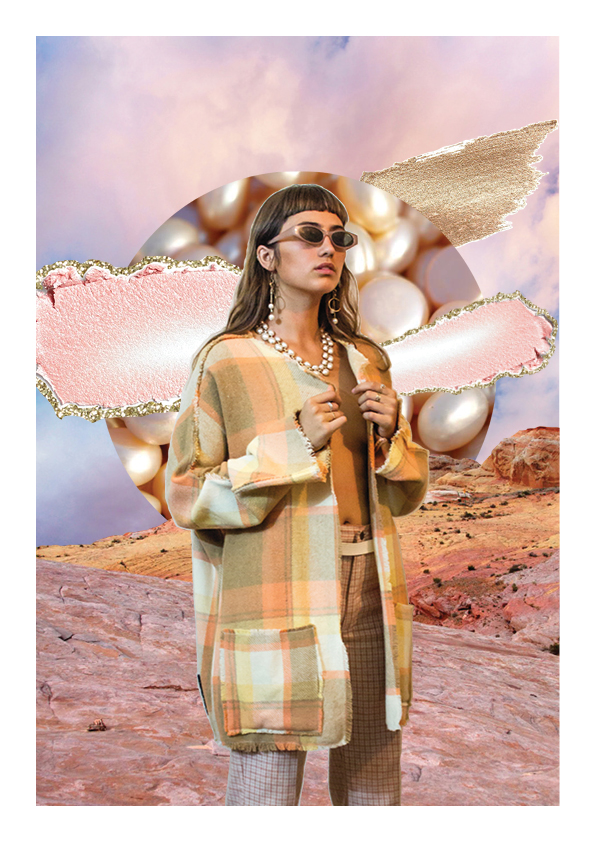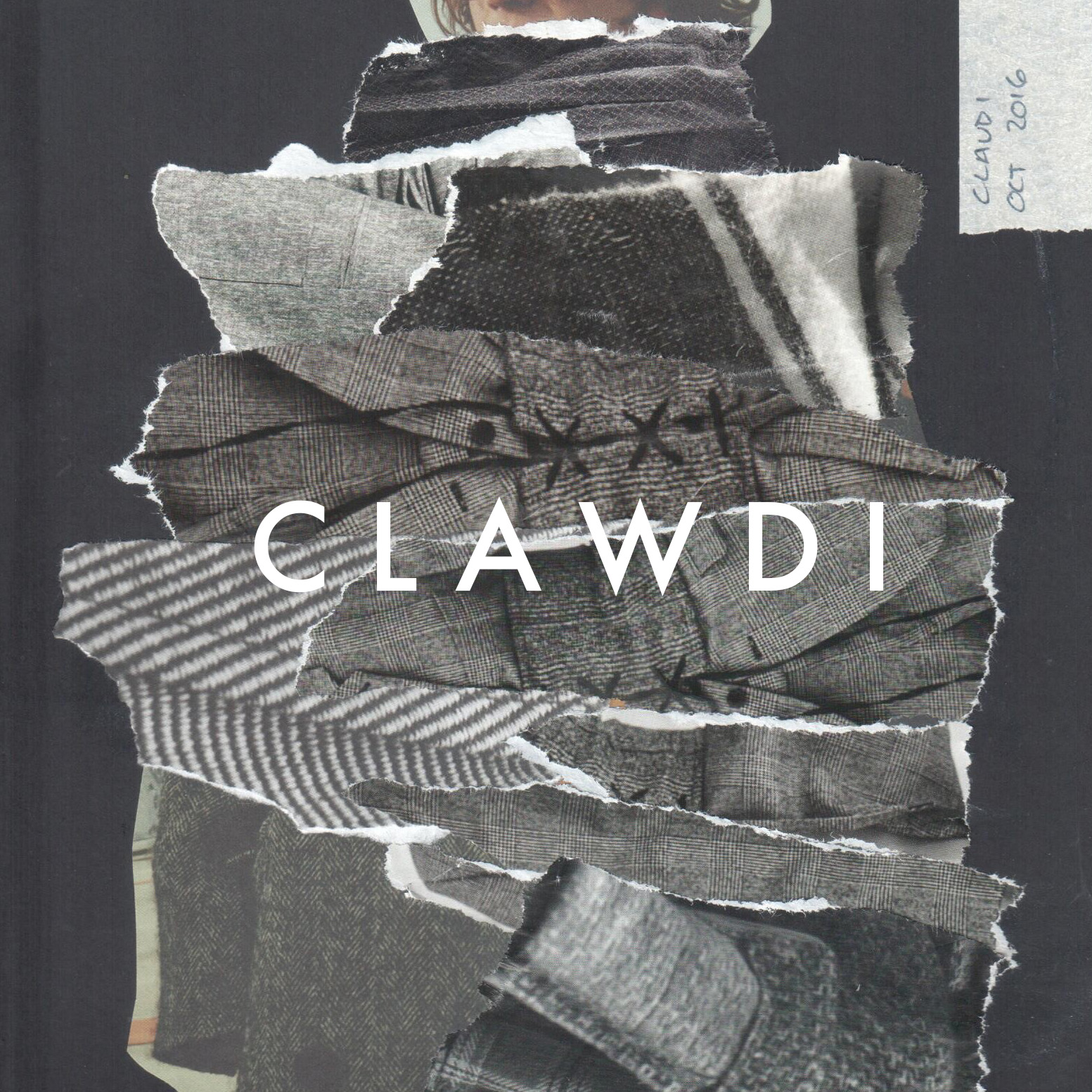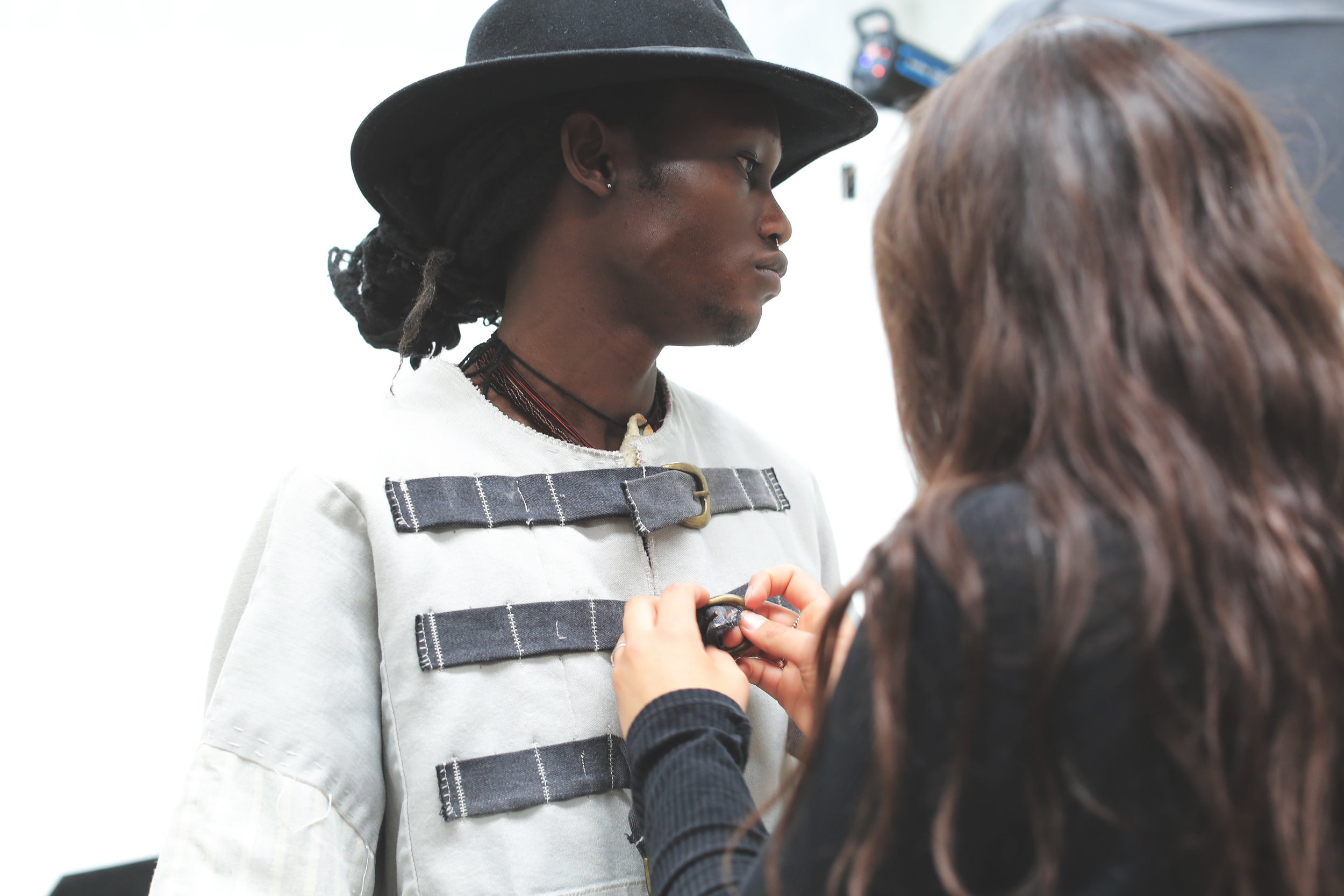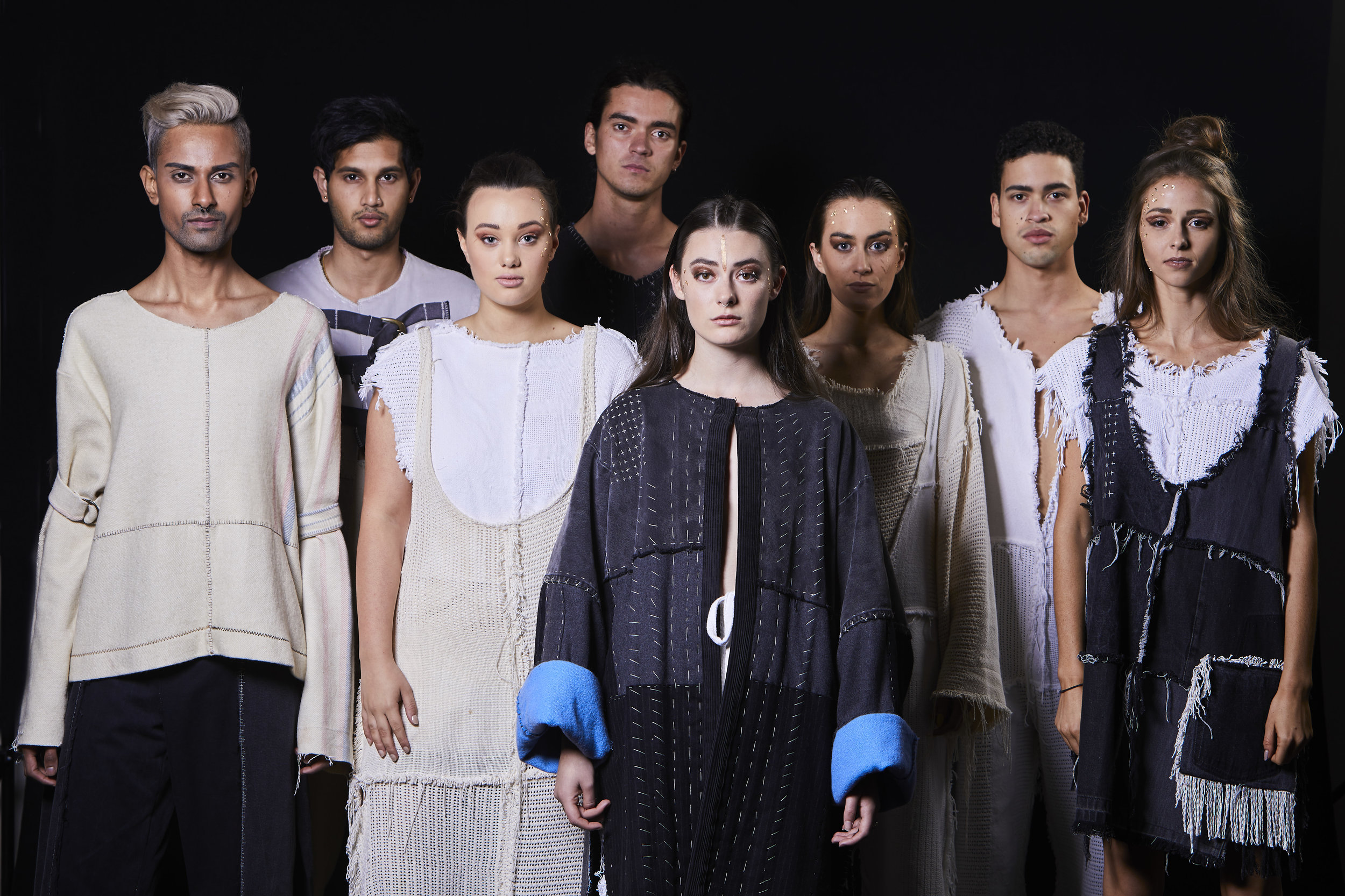Emerging label 'Clawdi' upcycling jeans + bedding to create new garments.
Tell me a little bit about how you decided you'd like to become a fashion designer?
I’ve always been a creative person with a need to create art, textiles turned out to be my favourite medium to express this. I also think it comes from having an exact idea of what I want to wear or ideas of certain pieces needed to complete an outfit but not being able to find them - so I design and create them myself.
What are some things you learnt when studying fashion that motivated, inspired and educated you on how to design with sustainability in mind?
I first started learning about the negative impacts of fashion when I was studying; one thing that stuck with me was that some fabrics are petroleum based!!! Sustainable practice in my work really came about while I was a broke uni student, I started looking at cheaper/more sustainable alternatives. I’d say I have a close relationship with the environment around me so the urgency to protect it has always been part of my lifestyle.
Is style + fashion something you have grown up with? Has there been someone who has influenced your love for clothes and sewing? Tell me a little bit more about this.
Influences and inspiration always changes (right now I’m going through a strange 80’s perm and power suits phase). The most important influence for me would be music. Some of my style icons include Grace Slick, Jimmy Page, Stevie Nix, Bob Dylan, Patti Smith, Keith Richards & Mick Jagger, Eric Clapton, Jimi Hendrix, Johnny Rotten, ANITA PALLENBERG, MARIANNE FAITHFUL, PAMELA DE BARRE. I have to mention my Mum; she’s always had a great sense of her own style (she can pull off any funky pants). My friends too, I’m surrounded by a bunch of great girls who all have their own styles and kill it.
I think it's really cool that you want to shake up the traditional fashion model by utilising traditional techniques in your work, whilst still appealing to a younger market. Can you explain/tell me a little bit about how you integrate style and sustainability in your designs and philosophy? What are the traditional techniques you use? Where in the world have they originated from and why this connection to see them live on? You also use second hand items, why the desire and passion to incorporate textiles that are preloved into your collections and designs?
Everything I make comes from deconstructed jeans or up-cycled bedding, which I source from secondhand stores. I work with the philosophy of taking something old or broken and creating something new, which I learnt from studying the traditional technique of Japanese BORO.
I was born in South Africa and have fortunately spent a lot of time traveling. I spent 8 months in India on a ‘surf trip’ with a bunch of boys, while they were surfing I’d sit in tailors shacks, stores or just on the side of the roads watching and learning from women doing embroidery. I could never say I mastered it. India has such a rich textile history, I would say my style of free hand embroidery is just a mixed up interpretation of all things I learnt in India and from studying other styles from all over the world.
Zero waste – which is a concept we talk about a lot now, I really came to understand it from traditional Indian clothing I bought in Karnataka, made from rectangles to limit waste, these pieces are handmade and embroidered usually by the mother in law given to the bride to be and kept, mended and passed down for generations.
I love the idea of seeing the past life of the material (every garment is individual and has a story) as well as now giving it a new life. There is already so much out there to utilize, I like the challenge of taking something considered trash and showing people it could be cool.
Your work really celebrates difference, uniqueness and individuality - the complete opposite of mass-produced fast fashion brands. Can you tell us why more than ever - especially when we're talking about the topic of feminism - it's important that we celebrate our differences as women and not our sameness?
My work is androgynous, one size fits all because I want the focus to be on how each different person is going to fit, style and love their pieces. I want them to be incorporated into anyone’s wardrobes, worn any time of the year and loved forever. They are all handmade and I maintain a close relationship with each of my clients to ensure that the piece is tailored for them.
I like to embroider some boss bitch stuff on my work, often referencing lyrics or songs like Femme Fatale by The Velvet Underground (Highly recommend looking into the lyrics). We’re living in a time now where women can be and are encouraged to be whoever they want. Whether you want to rock a bright red lipstick, shave your head; be a tomboy, be a girly girl it doesn’t matter as long as you do you and do it well.
What does slow fashion mean to you, and do you see a difference between style and fashion? Tell me a bit more about this.
I believe clothing is a language; it’s the first thing you say about yourself before you even open your mouth. There is a HUGE difference between style and fashion. Style is everything. I don’t care if what someone is wearing isn’t ‘in fashion’ as long as they have a style and can dress themselves well, I think that’s much more important and admirable. A lot of people buy all the latest fashion but that doesn’t put together a good outfit.
In terms of slow fashion to me this means buying meaningful pieces that will be special to you, recognizing the uniqueness and craft that goes into creating them. I have some pieces in my wardrobe that have been worn so much they are almost falling apart, I either mend them or hang them up on my walls to be admired, never thrown away!

We had the privilege of witnessing your collection at the first ever eco fashion week Australia last year and were really inspired by how you chose to use fashion as force for activism with your gender fluidity statements like "Girls will be boys' and 'Boys will be girls'. Why are these issues important to you and why use fashion as the medium to voice this?
I feel anyone can be who ever they want to be now, at eco fashion week while doing fittings all the female models were busy and I noticed all the male models sitting around bored so I said fuck it, I want you all in my show, were putting you in dresses because who cares anyone can wear a dress now. Just hours before the show I improvised the signs using the lyrics from the Kinks song ‘Lola’ which relates back to music always as an inspiration to me.
I’ve always been a bit of an activist (worked with charities and NGO’s in the past), fashion is one of the most influential industries in the world, for decades fashion has always been a medium to express opinions and make statements. If you have something to say (like I always do) and you have an audience, you’d be an idiot not to use it.
This piece is part of a special fashion revolution edition, why do you think it's important we demand greater transparency from brands and ask 'who made my clothes'?
It’s important to ask ‘who made my clothes’ because the more that question gets asked the more transparent brands are going to have to become. Demand and supply. Ignorance isn’t ok, people are being hurt and we are harming our planet all at the cost of fast fashion. As designers and especially consumers we need to take responsibility.
I have always said the future of the fashion industry lies in our ability to embrace sustainable design, without it there simply is no future for fashion. We cannot keep ignoring all the negative impacts.
As a consumer, how do you participate in fashion? Do you opshop, do you upcycle, do you invest in quality pieces from ethical or local designers? What's your purchasing checklist and what are some personal values/criteria that you live by when shopping?
Everything I own is either sourced from a second hand or vintage store. I spend almost everyday at op shops looking for material (and obviously clothes). I have a very particular checklist when I walk into second hand stores; a lot of people find it over whelming. My tips are always check shoes, bags, jewellery, and sunglasses first. Then I flick through all racks focusing on particular prints or colours that catch my eye, good quality fabrics (linen, silk, wool etc.). I also looooove checking out the men’s section. Some of my favourite pants, jackets and shirts have all been men’s. The only other pieces in my wardrobe are from other local designers/creative I’ve crossed paths with, It’s so important to support friends and locals!
What can we look forward to later this year at eco fashion week?
I am currently working on a new collection, which will be showcased at Eco fashion Week. I wont give away too much but it focuses on my obsession with denim and wool (obviously recycled). A lot of the inspiration comes from the Levi’s Strauss Company, a lot of Vivienne Westwood punk and my usual style icons (especially Edie Sedgwick and Twiggy) also with an 80’s twist.
What's your ultimate goal you'd like to achieve with Clawdi?
It’s a struggle at the moment but I’m going to stick to my guns; I hope that one day Clawdi is recognized as an influential brand that opened people’s eyes to how sustainable fashion can compete with fast fashion. I’m the kind of girl, who has always done things her own way. So my ultimate goal with Clawdi is to keep doing what I’m doing.
**Clawdi will be making a runway appearance at Perth Eco Fashion Week Australia for the second year in a row.
Be sure to book tickets to attend, with shows in both Port Douglas + Perth this year.**
- tommie magazine are official media partners for this event -
photos provided by the designer.
















